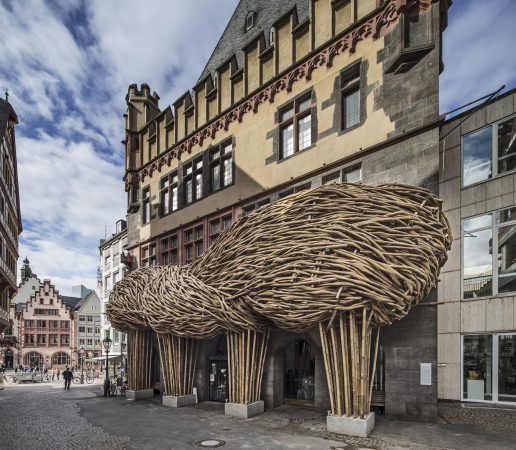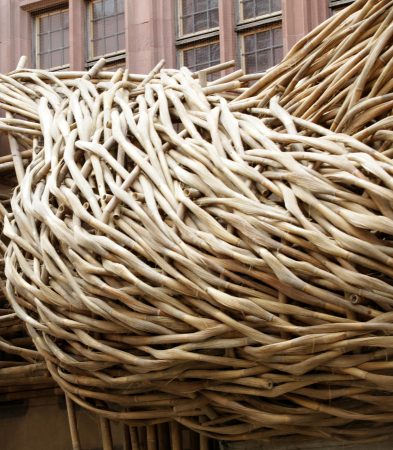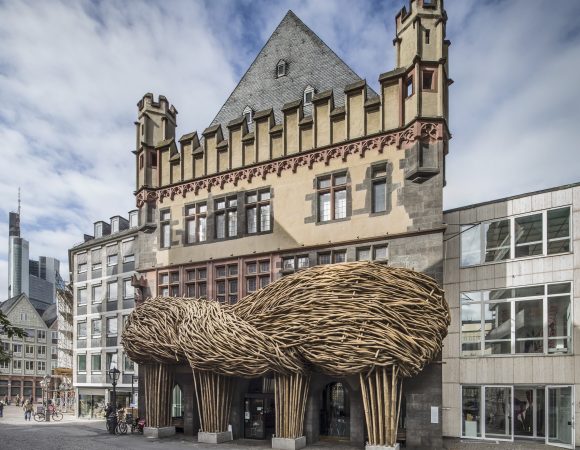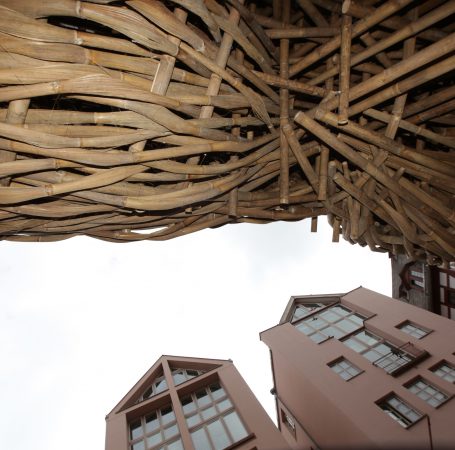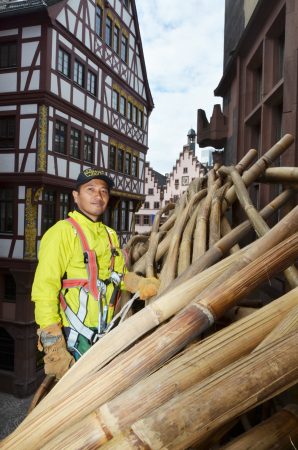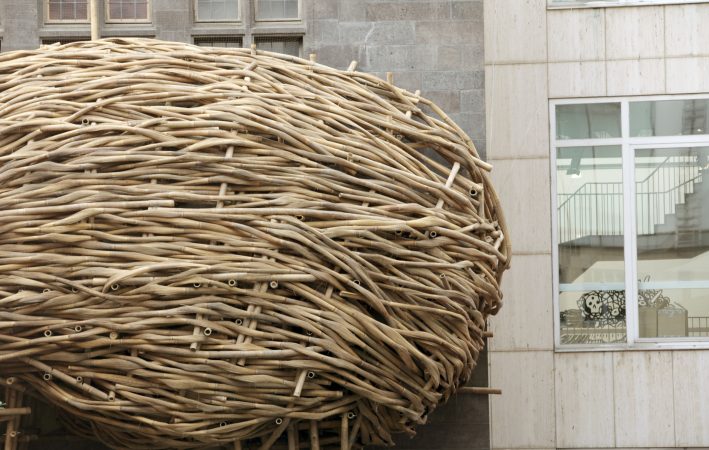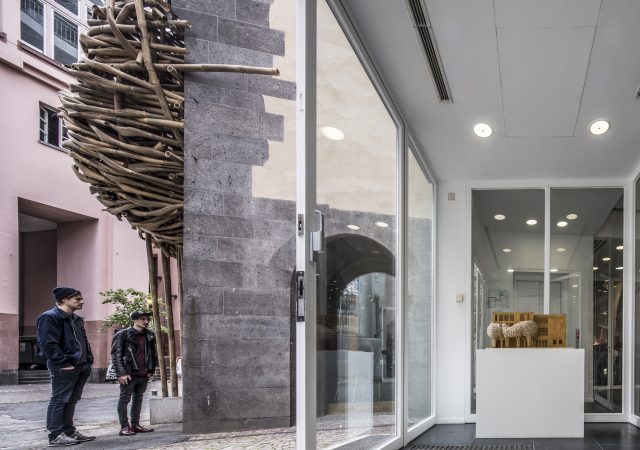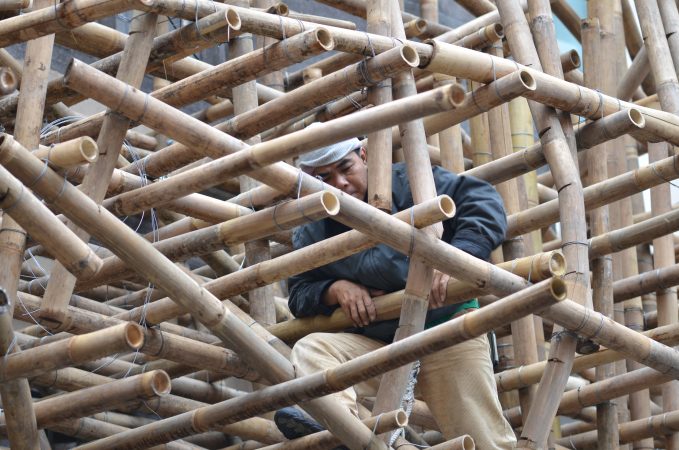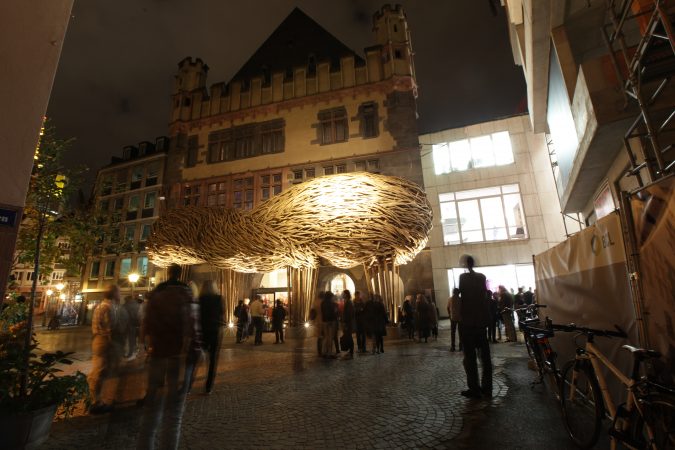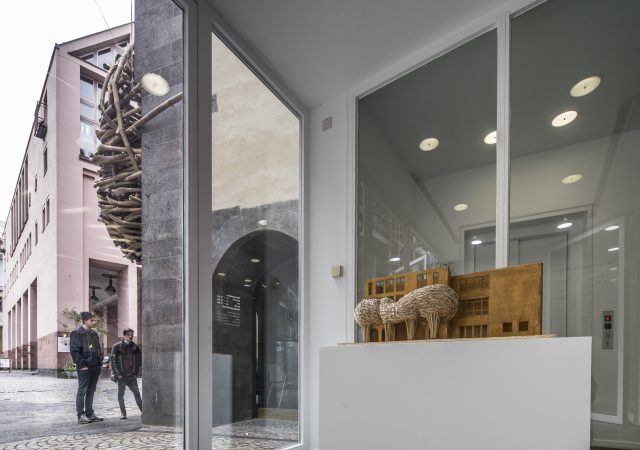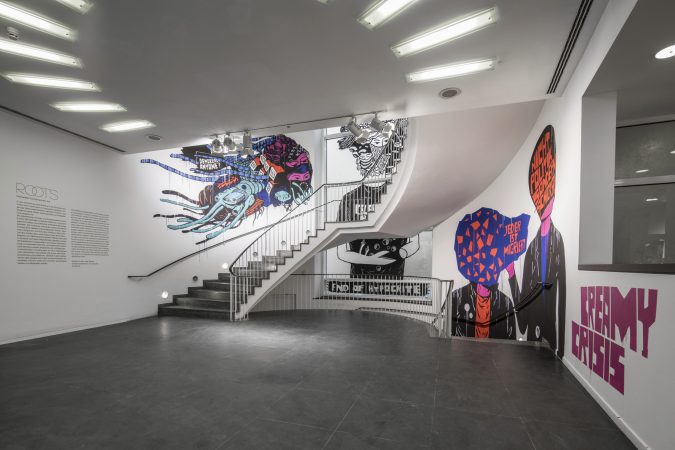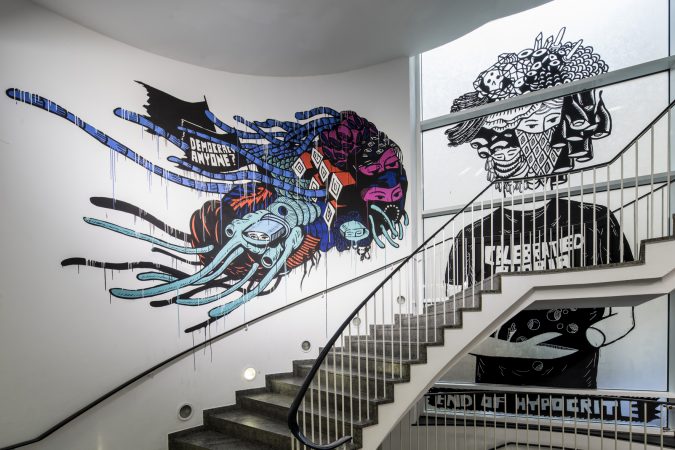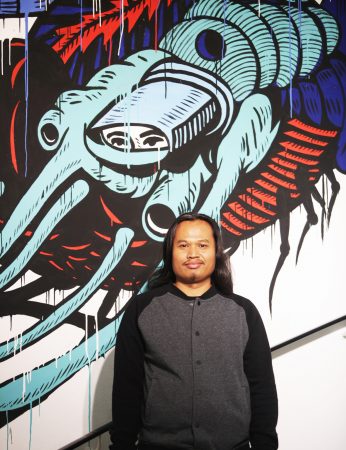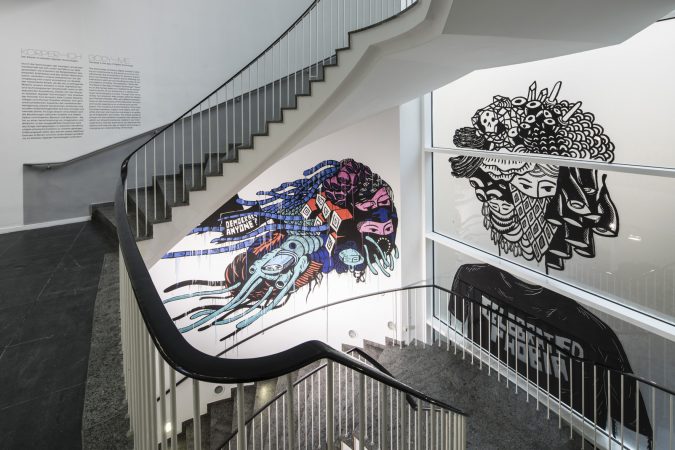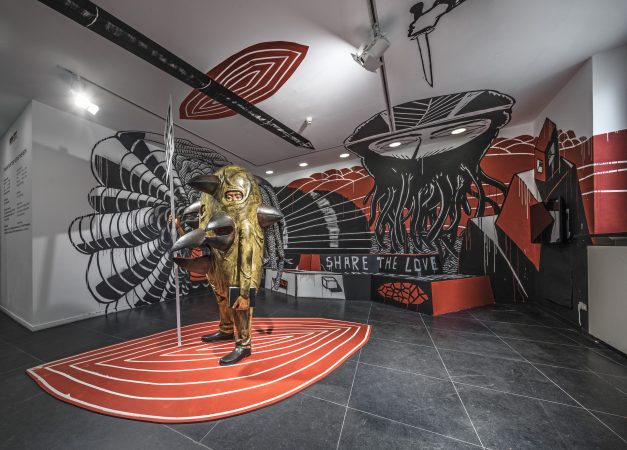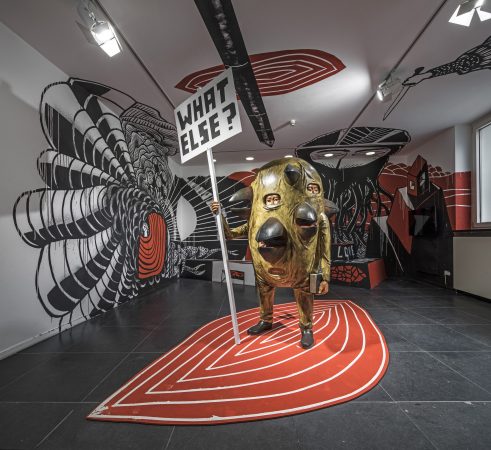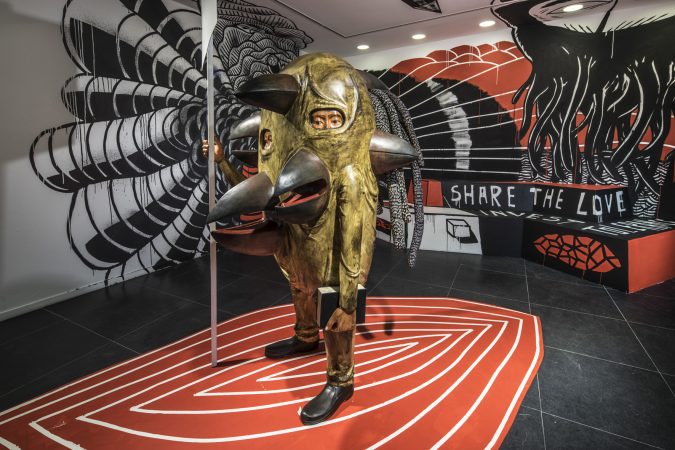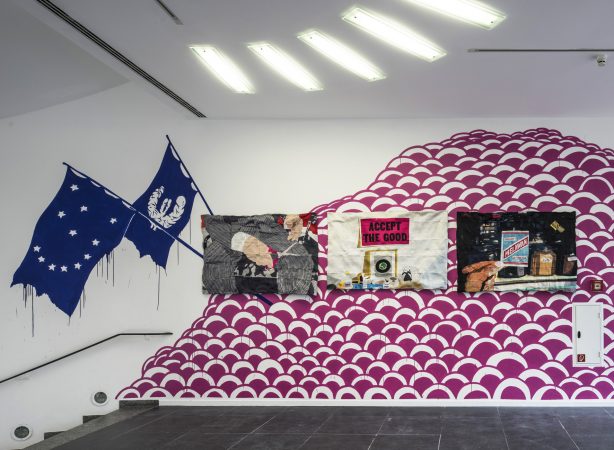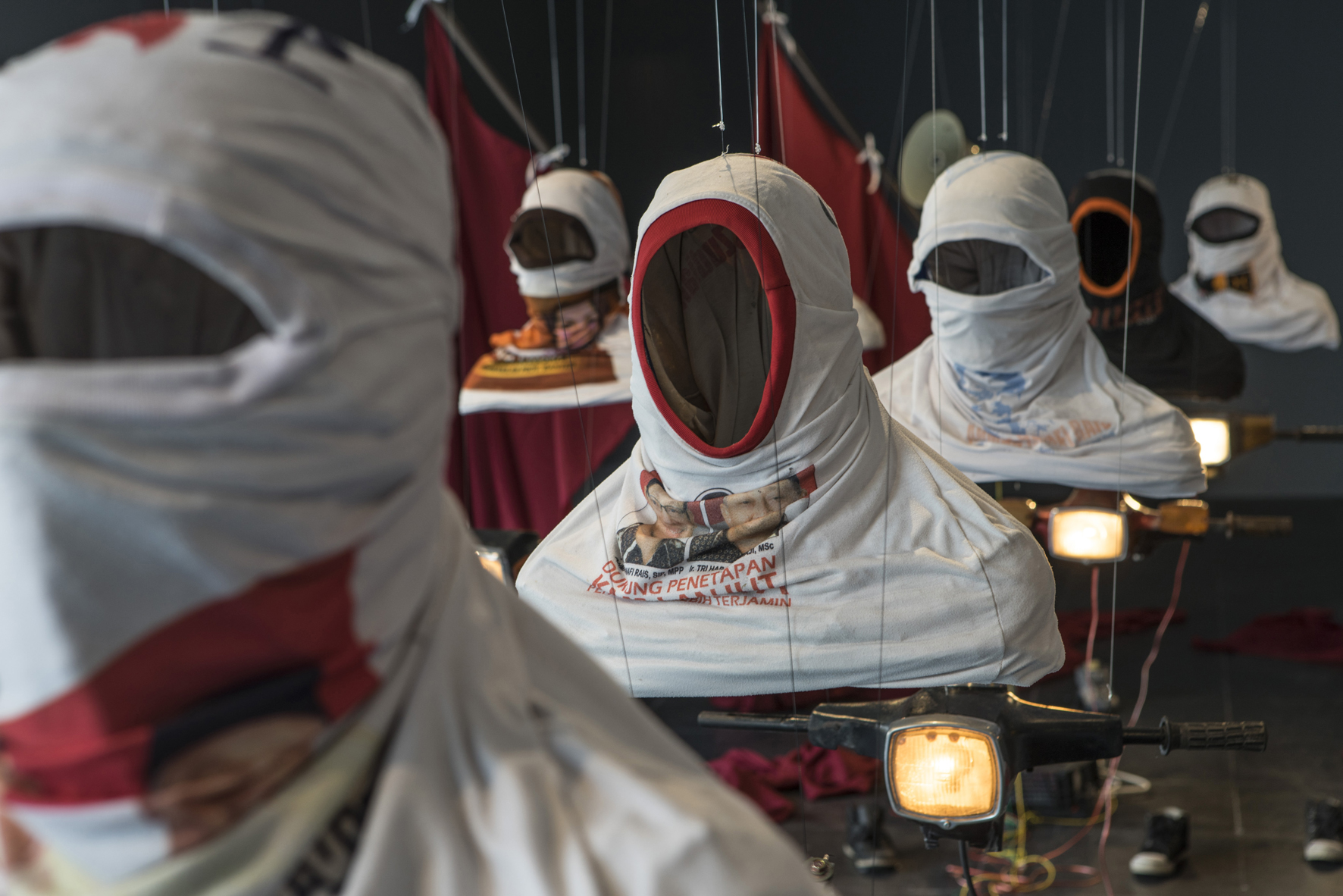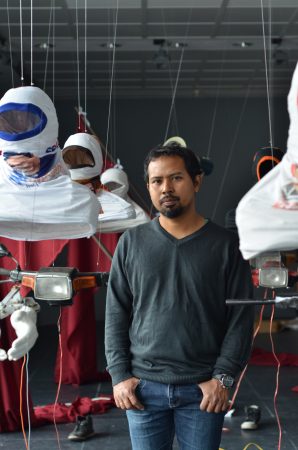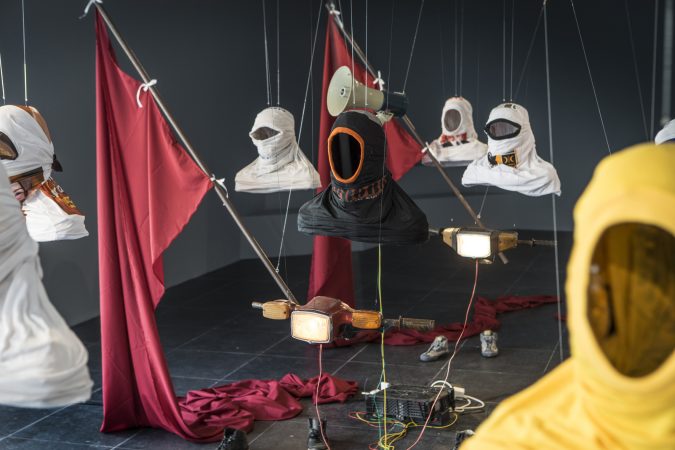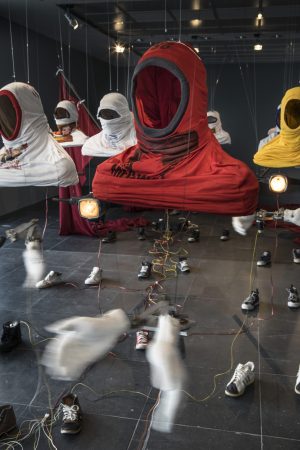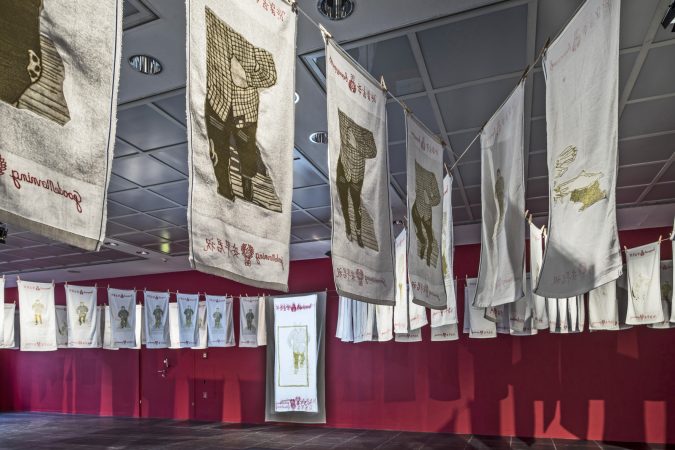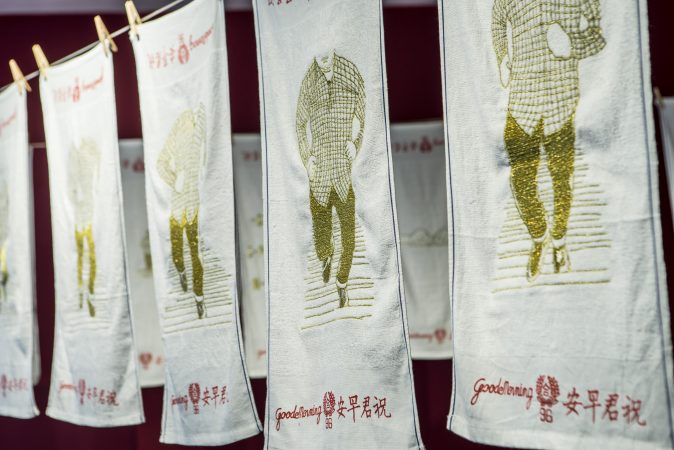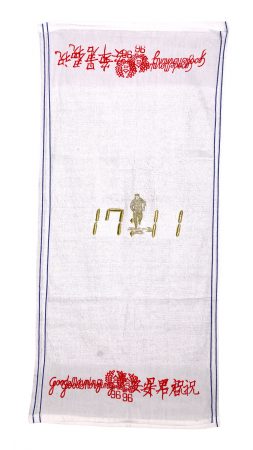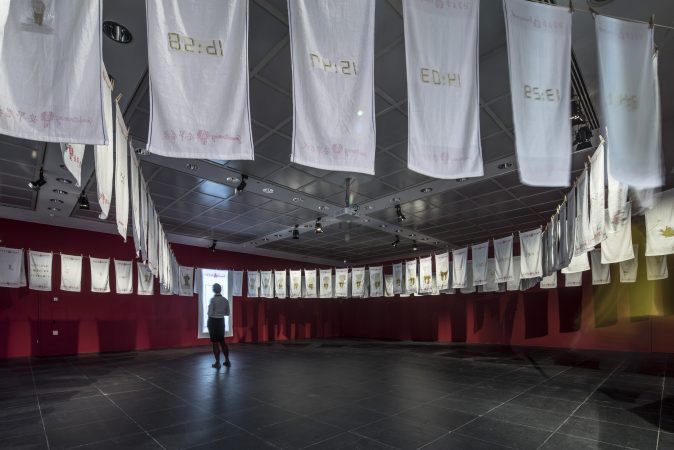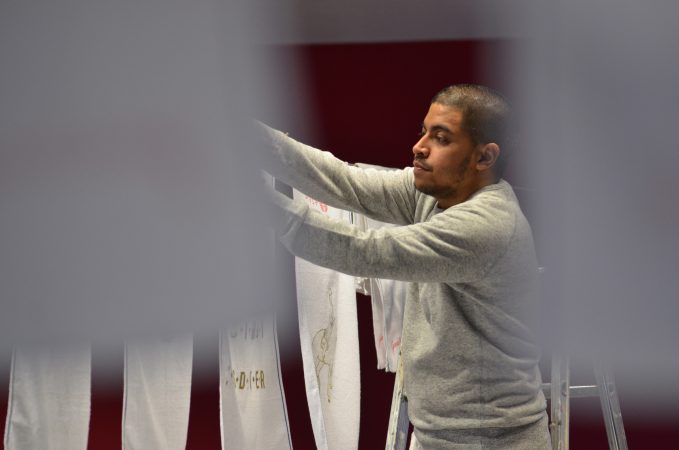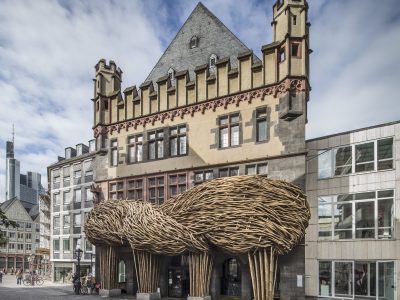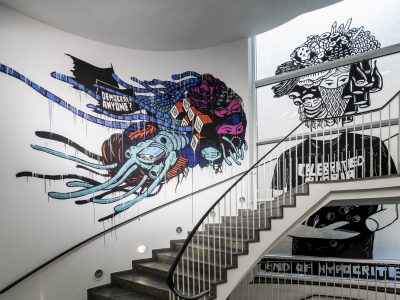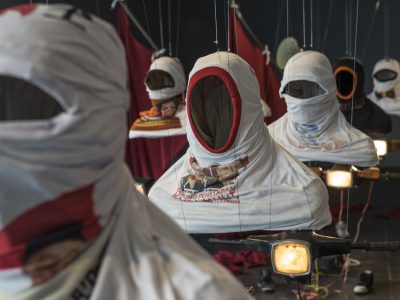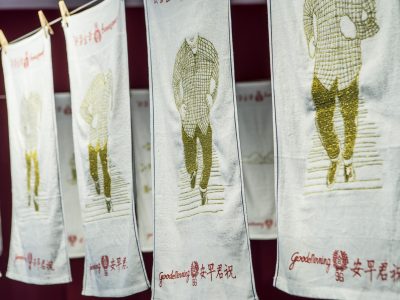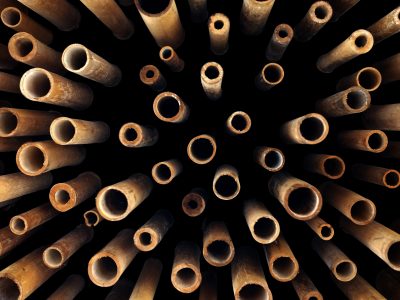Roots. Indonesian Contemporary Art
26.09.2015 — 10.01.2016
The Frankfurter Kunstverein presents “Roots. Indonesian Contemporary Art,” an exhibition of present-day art from Indonesia. The invited artists Joko Avianto, Jompet Kuswidananto, Eko Nugroho and the artist collective Tromarama emerge from a younger generation of the so-called Post-Reformation. Starting in 1998, after 30 years of Suharto’s autocracy, this era is characterized by a new found freedom of expression and experimental liberties. Their artistic practices root in the awareness of Indonesian culture and range between the poles of tradition and participation in modern life.
The four artists unite political discourse, religious beliefs and traditional craftsmanship with popular culture, street-art and comic illustration.
The Frankfurter Kunstverein presents artworks, which have been realized specifically for the exhibition and – in some cases – on-site. The spectacular bamboo installation by Joko Avianto will transform the Kunstverein’s façade taking immediate effect on its architecture and Frankfurt’s urban surroundings. Inside the exhibition space Jompet Kuswidananto, Eko Nugroho and Tromarama will each be given a broad platform to present their works.
Indonesia ranks as one of the most populous countries in the world and unites many different ethnicities, languages, religions and cultural influences in the more than 17,000 islands comprising the archipelago. Under Dutch colonial rule, which lasted for nearly 350 years, Indonesian culture experienced severe socio-cultural upheavals.
By the middle of the 20th century, a modern, westernized society had emerged. Political instability and the effects of a prolonged struggle for independence still reverberate in the tension permeating today’s society. Indonesia’s contemporary art production expresses the multidimensional aspects of the country’s history, its relationship with nature and spirituality in conjunction with contemporary pop culture, political attitude and public life.
All presented artists live and work in Indonesia and are therefore part of this vibrating social environment, which is captured by a rapid transformation from a traditional to a modern society. However, the artists’ work creates the distance necessary to take a critical stance. It grounds short-term change within a deeply rooted, complex socio-cultural tradition in which the tension between traditionalism and modernity, nationality and internationality, locality and globalism, universality and plurality becomes apparent.
For the realizations of his artistic concept, Joko Avianto has increasingly incorporated bamboo. Using this material, Avianto creates site-specific, large-scale installations for public spaces. In his sculptural experimentation, Avianto makes bamboo the primary subject, but at the same time breaks with its traditional usage. Above all, the artist is committed to formalism. From this position, he develops forms and techniques, which enable the extremely static material to be moulded into plastic forms. His works assert themselves as autonomous architectures and acquire a unique aesthetic presence. Working with this renewable resource not only marks a new artistic strategy, but expresses a critical view on the environmental implications of modern life. Avianto thus endows his work with an intrinsical awareness of the essential societal value of art. His studio in Bandung is based on a community project; in using bamboo he refers to its traditional use as building material, which is gradually being replaced within a rapidly growing society and its industrial development. Set up in the course of three weeks, Joko Avianto’s installation “Pohon Besar” (Big Trees) on the façade of the Frankfurter Kunstverein incorporates 1.500 interlaced bamboo sticks, specifically cut-down and each 6 m long.
Eko Nugroho began exploring public spaces, especially walls, as an artistic medium while still a university student at the Indonesia Institute of Art Yogyakarta. He subsequently established “Daging Tumbuh” (A Growing Meat), an art space for street and comic book art, which is equally open to artists and non-artists. From its origins in public spaces throughout the city of Yogyakarta, his artwork has expanded into various spaces, both indoor and outdoor. Nugroho’s two-dimensional drawings, embroidery and emblems are also embodied in his exploration of three-dimensional space. In the exhibition, Nugroho uses the floor, wall and ceiling to juxtapose symbols, visual ideas, patterns and forms that go beyond the boundaries of art or design and reach into political and socio-critical realms. He incorporates text into his artwork to satirize the meaning of common Indonesian sayings. Eko Nugroho grew up in the midst of cultural contradictions and he addresses these in his art. While still belonging to the traditional Javanese cultural heritage, in which traditional puppet plays, gamelan, embroidery and folktales are central, he is also part of the dynamic contemporary and international art environment, which cannot escape the wide-reaching influence of Western Culture. These cultural contradictions gain added complexity through the influence of pop culture, economic and sociopolitical crises and the position of Islam in contemporary Indonesian society.
A graduate of the Gajah Mada University in Yogyakarta, Jompet Kuswidananto is interested in kinetic transformations of sound and their translation into visually tangible shapes. In the 1990s, he started to create sound pieces, performances and large-scale installations. One of these, entitled “Garden of the Blind” was assembled from electronic waste. Recently, his art has begun to concentrate more sharply on certain socio-political issues. In the first decade of the 21st century, his work focused on presenting symbols and idioms characteristic of the Javanese Kingdom’s army in a series of works entitled “Java Amplified,” “Java Machine” and “War of Java, Do You Remember.” Jompet Kuswidananto’s contribution to this exhibition is a work entitled “Power unit.” As in his previous work, the piece combines kinetic and visual elements of sound. Objects, including shoes, motorcycle parts and forms resembling pairs of human hands and hooded human heads are floating loosely in space, subtly assuming body-like forms. However, their artificial animation by means of noise and movement cannot hide the fact that they are only empty shells, resembling hatched cocoons. Jompet Kuswidananto thus explores human traces and marks the paradoxes of presence and absence, impermanence and permanence in post-colonial reality.
The artists’ collective Tromarama, contributes a piece entitled “Break A Leg.” 230 embroidered cloths are hung on lines, which permeate the whole exhibition space.
The projection of a stop-motion animated film presents the subjects of the textiles’ embroideries in an endless loop: A man wearing western office-apparel is running towards the viewer, while his silhouette is overlain by a digital time display. The words “Good Morning”, embroidered on the margins, reference the name of a popular Indonesian towel brand. These allegedly domestic but ambiguous objects are embellished with golden thread and hung up like drying laundry. The work’s critical undertone reflects on life in a post-industrial nation where everything is measured by the power of economy and where the impact of globalization and its request to increase productivity creates a rapid acceleration of life. Within the context of the installation, the phrase “Good Morning” takes on a double meaning. While implying the hope and optimism associated with welcoming a new day, the installation’s structure reveals underlying ironies of urban life, which is defined by technological and digital utopias. The image contents of the animation and the embroidery motifs purposely contrast the slowness of the applied production techniques. With this work, Tromarama succeeds in making a subtle reference to the Indonesian balancing act between social reality and the roots of culture and tradition.
Participating Artists/Artist Collectives: Joko Avianto (*1976 in Bandung (ID), lives in Bandung); Jompet Kuswidananto (*1976 in Yogyakarta (ID), lives in Yogyakarta); Eko Nugroho (*1977 in Yogyakarta (ID), lives in Yogyakarta); and Tromarama, founded in 2006 by Febie Babyrose (*1985 in Jakarta (ID)), Herbert Hans (*1984 in Jakarta (ID)), and Ruddy Alexander Hatumena (*1984 in Bahrain (ID)), all live in Bandung (ID).
Curated by: Asikin Hasan, Franziska Nori and Rizki A. Zaelani
Under the auspices of the Ministry of Education and Culture of the Republic of Indonesia and in collaboration with the National Gallery of Indonesia in Jakarta, the exhibition “Roots. Indonesian Contemporary Art“ takes place on occasion of Indonesia’s appearance as the Guest of Honour at the Frankfurt Book Fair 2015.
A German and Indonesian catalogue will be published for the exhibition including texts by Franziska Nori, Goenawan Mohamad, Asikin Hasan and Dr. Amanda Rath; layout by Pat Adele, photos by Andang Iskandar, published by Multi Arta Mayida EO; 60 pages
The exhibition is shown simultaneously with the exhibition “Body-Me: The Body in the Age of Digital Technology” (26.09.2015 – 10.01.2016). The themes of both exhibitions will be discussed within the framework of an extensive accompanying programme. Highlight events in the program include the panel discussion “Roots. Indonesian Contemporary Art” on October 15, 2015 with all participating artists, as well as Asikin Hasan (Co-Curator),
Nirwan Dewanto (Writer), Dr. Amanda Rath (Lecturer of Modern and Contemporary Art of Southeast Asia, Department of Southeast Asian Studies and Institute of Art History, Goethe-University, Frankfurt am Main) and Franziska Nori (Director, Frankfurter Kunstverein); on October 22, 2015 the talk “Diversity and Cultural Identity in Indonesia after the Autocracy of Suharto” with Prof. Dr. Susanne Schröter (Ethnologist, Professor of the Cluster of Excellence “Normative Orders” at Goethe-University Frankfurt) and Hendra Pasuhuk (Author of “Traum der Freiheit – Indonesien, 50 Jahre nach der Unabhängikeit” and editor for Deutsche Welle in the South Asian Area); and on October 28, 2015 the talk “Indonesian Contemporary Art in the Focus of the Global Art Market”, by Matthias Arndt (Gallery owner located in Berlin and Singapore, expert of the Southeast Asian Art Scene).

